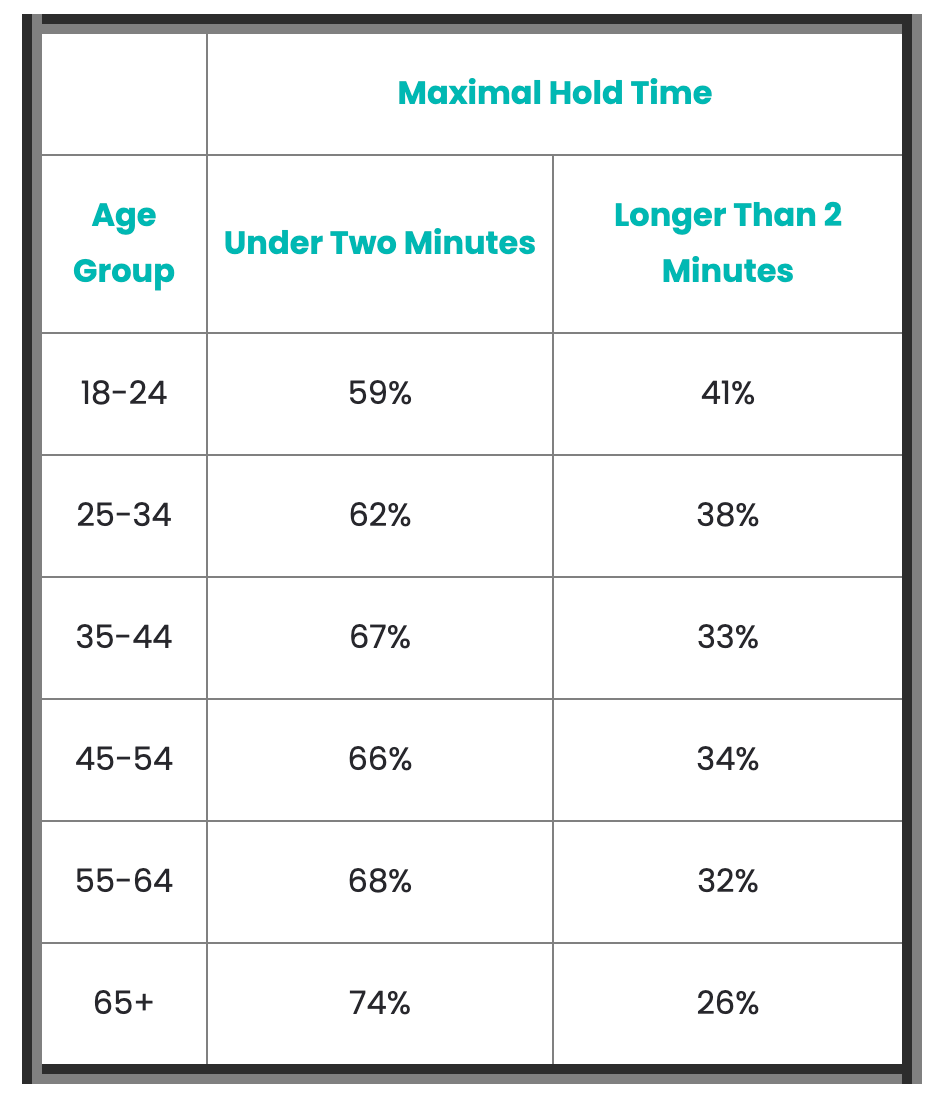Once upon a time, brands were the center of the customer experience. Sure, the customer was “always right,” but brands got to choose when and how they fielded any given question in the first place.
The digital revolution and the rise of social media have forever changed this relationship. By the time a consumer makes the first contact—especially if it’s with a big brand—they’ve already looked it up in ways that make sense to them: Facebook, Yelp, Google, Instagram.
This customer expects this hands-on, self-directed experience to continue in research, consideration, and through the purchase. If they have a question, they anticipate getting in touch when and how it’s convenient for them.
Customers want to stay in control instead of handing over the reins to a brand. If you acknowledge that and let them take the lead, facilitating a customer-in-control experience at all touchpoints, you can earn the kind of loyalty that lasts a lifetime.
Today’s customers are channel agnostic.
Omnichannel is no longer the next big thing in customer service. Omnichannel service—the practice of offering a seamless experience across channels—is already in place, and already an expectation.
Omnichannel, channel agnostic, and omnipresence
Omnichannel means that customers can contact you via the channel of their choice without having to start over from square one. With omnichannel, a customer can call a company to follow up on a previous email, without having to explain the content of that email to the representative on the other end of the line.
Yet being channel-agnostic means you go a step further. You’re ready to serve customers no matter where they reach out to you, and no matter how often they change their preference.
And they will change. Today’s customers want to communicate with brands using the method they want whenever they want. They might change their minds day by day or even hour by hour, sometimes even needing to switch channels mid-conversation.
The final stage of this evolution is what we consider brand omnipresence. In an ideal state, customers interact with a brand in a variety of touchpoints. Omnipresence means you’re not only ready to connect wherever the customer wants to connect, but you give them options at every step along the way. They may start self serving, then require a phone call, move to text after receiving a shipping notification, and rescheduling their call for after they’ve received the product.
It’s not enough to let the customer control their experience up front. The strongest brands give control through every touchpoint and engagement so that customers have an experience they can tailor while being met with contextual knowledge every step of the way.
The customer directs the conversation.
With an omnipresent approach, you’re ready to pick up the conversation from where it left off, no matter where the customer goes next. It’s not about creating an experience where you’re present across all channels for the customer—it’s about letting them tell you where they’re headed.
Customer-in-control means meeting the customer where they are throughout their entire journey. Prospects should be able to find you and ask questions no matter where they’re researching. Then, after they buy, customers should have an easy time asking questions about their purchase or reporting a problem.
Evolve your channel availability.
If you’re not sure whether you’re channel-agnostic already, ask yourself how easy it is for customers to interact with your brand after purchase. It’s not a question of whether you follow up, but rather how easily they can find multiple ways of contacting you about their purchase.
Following up can be useful, but it still puts you in the center. It’s about you staying in touch, not about what they need.
If you’re truly customer-in-control, you make yourself available in any way the customer might think to contact you with a question. That includes your website and social media, as well as any receipts or invoices you might have sent.
The first step? Offer simple ways for customers to get in touch with you. Let them text to schedule a time to get in touch with you, text them a reminder, then let them reschedule in any channel when they need to.
Preferred communication methods beat quick results.
When a customer contacts a brand, they want a quick resolution. A 2019 study shows that nine out of 10 customers want resolution within 24 hours. But if that resolution isn’t complete or satisfying, then the customer experience isn’t what it could be.
In a recent survey of customer support experiences, the quality of an interaction depended more on how helpful the agent was than on how fast the brand responded. Customers also expressed a desire for more contact options, including text-based service channels.
It’s not that consumers want to replace any particular method of communication with any other. Phone calls are still the channel of choice of many buyers, especially e-commerce customers and older buyers. What they want is the ability to choose a different channel.
In the end, it all comes down to agency. Customers want a good experience, starting with their choice of channel. They don’t want to be forced to the phone instead of texting—whether they need to text because they’re at work or in a public place, or if they simply prefer that method.
By giving them their preferred option, you instantly improve their perception of how helpful your service experience is. They go into the interaction knowing that it’s centered around them. And we’ve even found that customers who schedule a callback are willing to “wait” 300% longer than those on hold while still remaining a brand promoter. It’s a win-win for both customers and brands.
Waiting is okay if the customer is in control
Customers are notorious for not wanting to wait on hold for very long. In a 2019 survey of more than 1,500 customers, two-thirds reported a willingness to wait for no more than two minutes before hanging up. More than 13% said that they’re not willing to wait at all.
Source: Arise
But can you blame them? Think about the last time you had to walk around your home or office with a phone in your hand or by your side, just in case an agent picked up. You can’t go to the bathroom, eat a snack, or start something else for fear of an agent picking up at a moment’s notice.
Waiting on hold is a uniquely helpless feeling, and that’s what customers object to—not the actual act of waiting. People associate waiting on hold with having to put their day on hold. They don’t know whether they’ll be able to make another call in 10 minutes, a half-hour, or longer.
When you return control of the hold experience to the customer, the nature of the experience changes.
When immediacy isn’t possible, customers appreciate predictability.
Customers understand not being able to receive an immediate response. They’re less patient when they don’t know how long it will take for someone to answer.
You can break this cycle of frustration quickly by giving the customer an estimated wait time. When they know how long they’ll be on the phone, they can choose whether it’s worth staying on the line. Then, let them decide how they want to move forward.
Offer customers choice with callback options.
Given the available technology, customers shouldn’t have to choose between waiting for hours and giving up. In fact, that’s not really a choice at all.
Today, expecting the customer to call back later and try all over again, perhaps only to find another half-hour hold, just doesn’t make sense. The customer isn’t in control, and they know it. More importantly, they feel it.
Give the customer the agency they want by letting them choose how to wait. Maybe they’d prefer to stay on the line, or maybe they’d find it easier to receive a callback once a representative becomes available.
Not sure what that looks like? Here are a few ideas.
Voice callback and SMS
If possible, offer the customer a voice callback or SMS response. They might have called you on the phone, but a text may be better for them in an hour.
Sending a text also lets the customer know that SMS messaging is an available option. Statistics show that 89% of consumers want to communicate with brands via text, and knowing that you offer the option could easily be another point in your favor.
The more options you offer and the more control you give a customer, the more tolerant they’re likely to be regarding wait times. It’s much easier for most people to accept a callback or text in an hour than to wait on hold for 20 minutes.
They can go about their day as they wait for that callback. Their time doesn’t feel wasted and they don’t feel like you’ve undervalued their time.
Digital scheduling
This strategy works on other channels as well. If your company has a live web chat staffed by real people, high chat volumes will inevitably lead to wait times there as well.
With our Mindful platform, customers can click inside a mobile app, website, or chatbot to request a callback. They can get one as soon as possible, or schedule a call for a dedicated time.
Scheduled callbacks put even more control in the customer’s hands. If their day is hectic and an ASAP callback is too unpredictable, a scheduled callback makes the support process convenient again—providing a smoother experience from the top, so agents can resolve in record time.
Recap
VHT has been offering callback technology for more than 25 years, responding to changing customer needs and offering technologies that contemporary customers demand.
When adding options like callback and texting, Mindful’s customers have seen significant increases in customer perception metrics like Net Promoter Scores (NPS) and Customer Satisfaction Scores (CSAT).
Metrics like NPS and CSAT connect directly to your bottom line. One study revealed that a 7% boost in NPS correlates with 1% revenue growth. Meanwhile, companies with a stronger focus on customer experience spend 79% less yet earn 84% more.
A customer-in-control approach strengthens these metrics because it centers the service call on your customer’s needs. In some cases, the customer has a better view of the brand than they did before the issue arose, simply because they get to experience your customer focus.
To experience the power of callback for yourself, try out the experience for yourself. See what customer-in-control feels like for your buyers. If you’re ready to learn more, our sales team is here to tell you how it works, and you can get Mindful implemented in a matter of days.






